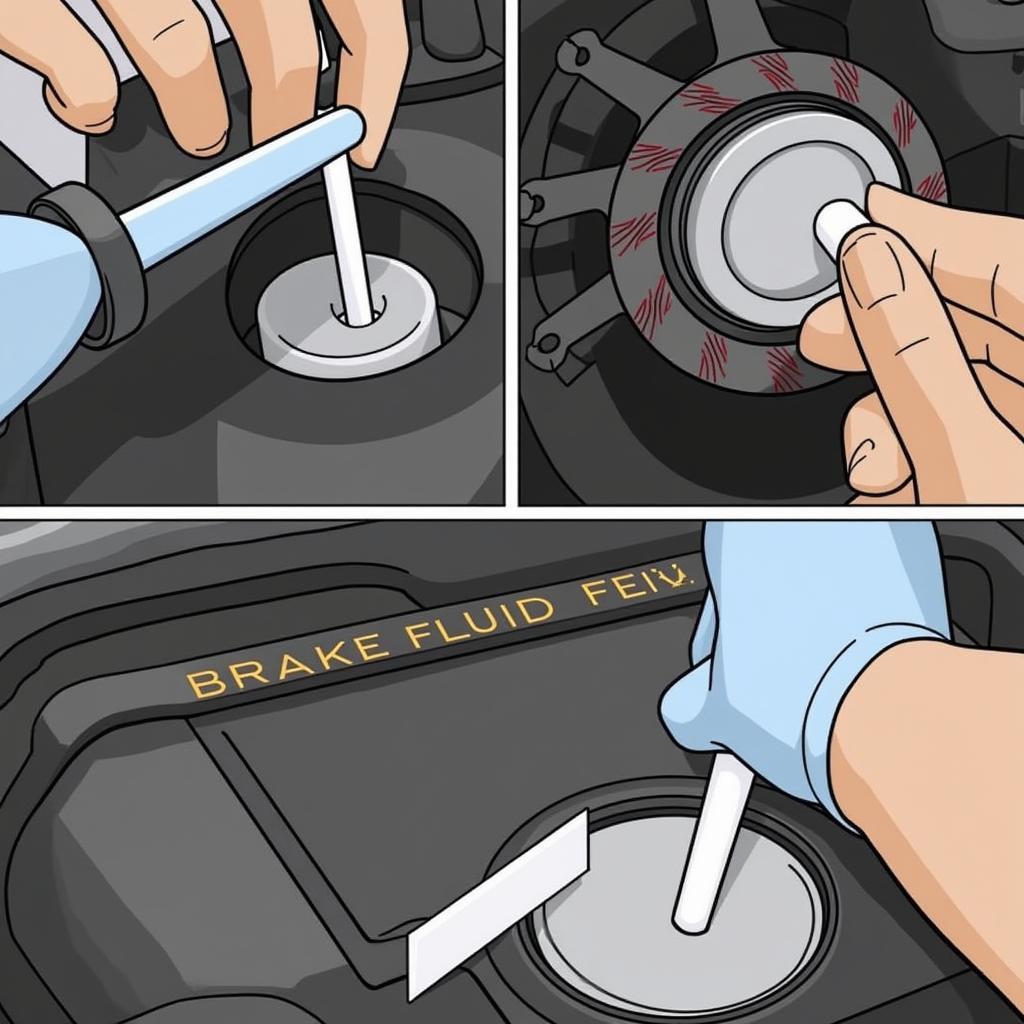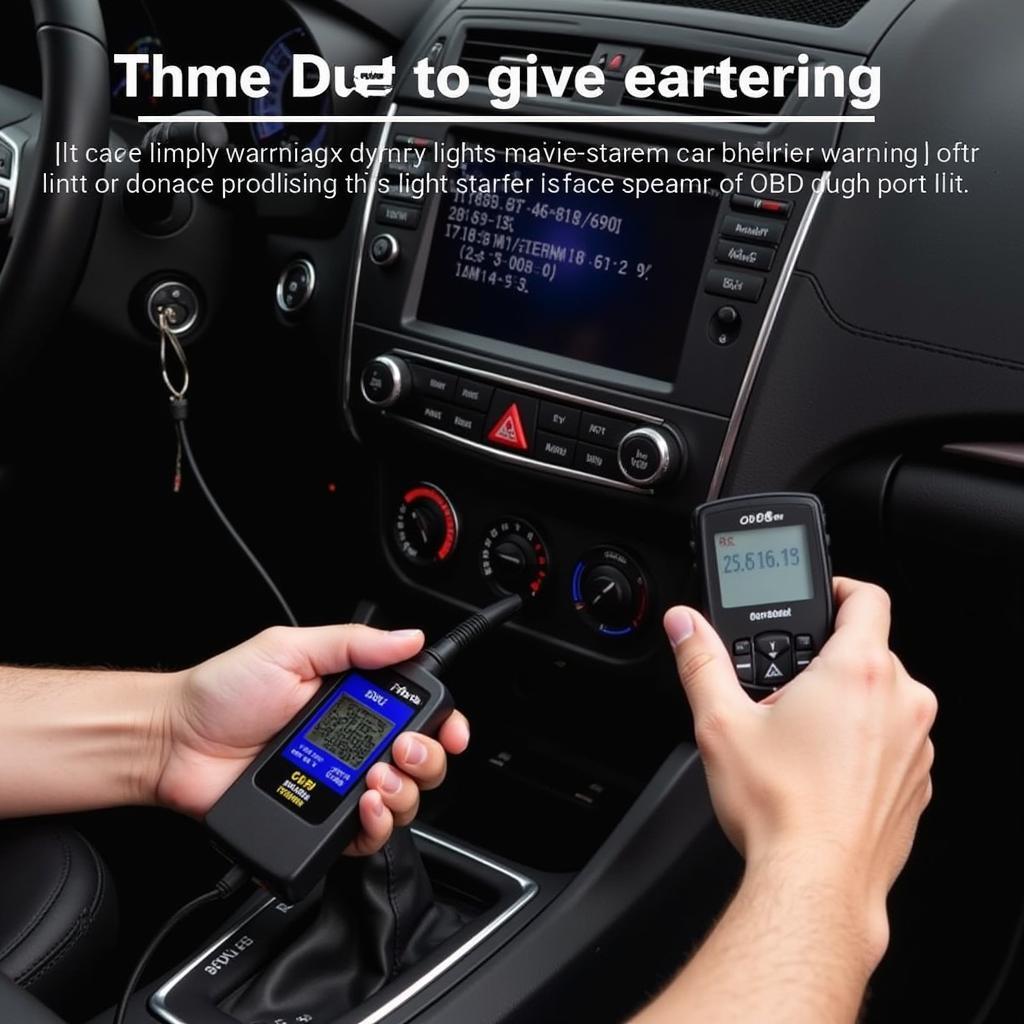An emergency brake light hazard warn signal indicates a critical issue within your vehicle’s braking system. It’s vital to address this warning promptly to ensure your safety and the safety of others on the road. This article will delve into the intricacies of this warning, explore potential causes, and guide you through troubleshooting steps. We’ll also look at how remote software solutions can be employed for diagnostics, programming, and even repair.
After a sudden stop, I noticed my brake warning light dimly lit. Could this be related to the hazard warning? It’s certainly possible, and we’ll explore that later in the article. A malfunctioning brake system can manifest in a variety of ways, from a simple illuminated warning light to a complete loss of braking power. Understanding the nuances of these warnings is crucial for timely and effective intervention.
Decoding the Emergency Brake Light Hazard Warn Signal
The emergency brake light hazard warn is often accompanied by a visual indicator on your dashboard, typically a flashing red exclamation point or the word “BRAKE.” This signal indicates a potential problem with your parking brake, hydraulic brake system, or even the electronic stability control (ESC). Ignoring this warning can lead to dangerous situations, potentially resulting in reduced braking performance or complete brake failure.
What does the emergency brake light hazard warn mean? Simply put, it signals a potential issue within your vehicle’s braking system demanding immediate attention. This could range from a simple issue like low brake fluid to a more complex problem with the ABS system.
Common Causes of the Emergency Brake Light Hazard Warn
Several factors can trigger the emergency brake light hazard warn signal. Low brake fluid is a frequent culprit. This can be due to a leak in the brake lines or simply worn brake pads. A malfunctioning brake light switch, a faulty ABS sensor, or a problem with the electronic parking brake can also trigger the warning.
Brake Fluid Level Check
One of the first things to check is your brake fluid level. If it’s low, top it off and observe. If the level drops again quickly, you likely have a leak that requires professional attention.
 Checking Low Brake Fluid Level in Car
Checking Low Brake Fluid Level in Car
Brake Light Switch Inspection
A faulty brake light switch can also trigger the warning. This switch activates the brake lights when you press the brake pedal and can sometimes malfunction, sending erroneous signals to the vehicle’s computer.
If you suspect a brake system malfunction warning Ford Ecosport, it’s best to check the brake light switch and fluid levels first. These are relatively simple checks that can save you time and money.
Leveraging Remote Diagnostics and Software Solutions
Modern vehicles are increasingly reliant on sophisticated software systems. This allows for remote diagnostics, programming, and even software-based repairs. Specialized software can pinpoint the exact cause of the emergency brake light hazard warn, eliminating guesswork and saving time.
Remote Programming and Repairs
In some cases, remote programming and software updates can resolve the underlying issue without requiring a physical visit to a repair shop. This is particularly useful for addressing software glitches or bugs that can trigger the emergency brake light hazard warn. For instance, a warning light anti lock brake might be triggered by a software issue.
If you have a GMC brake assist warning light, remote diagnostics can be a powerful tool to pinpoint the cause. This technology offers a convenient and efficient way to address brake system issues.
Troubleshooting Steps for Emergency Brake Light Hazard Warn
-
Check the parking brake: Ensure the parking brake is fully disengaged.
-
Inspect brake fluid levels: If the fluid is low, top it off with the correct type as specified in your owner’s manual. If the level drops rapidly, suspect a leak and seek professional help. You might have a problem like a Ford Ecosport brake system malfunction warning.
-
Check brake lights: Ensure all brake lights are functioning correctly. A faulty brake light switch could be the issue.
-
Inspect brake pads: Worn brake pads can trigger the warning, especially if they wear down to the metal backing plates.
-
Scan for diagnostic codes: Use a diagnostic scanner to read any stored trouble codes related to the braking system.
 Using an OBD Diagnostic Scanner on a Car
Using an OBD Diagnostic Scanner on a Car
Conclusion
Addressing an emergency brake light hazard warn is crucial for your safety. By understanding the potential causes and utilizing available diagnostic tools, including remote software solutions, you can quickly resolve the issue and ensure your vehicle’s braking system is operating optimally. Remember to consult a qualified technician for any complex repairs or if you are unsure about any troubleshooting steps. Ignoring this warning could lead to serious consequences, so take action promptly.
FAQ
-
What should I do if the emergency brake light hazard warn stays on after checking the parking brake? Check the brake fluid level and inspect the brake lights. If those are okay, you likely need professional diagnostics.
-
Can I drive my car with the emergency brake light hazard warn on? It’s highly discouraged. Reduced braking performance can be dangerous. Seek professional help immediately.
-
What are the common causes of low brake fluid? Leaks in the brake lines, worn brake pads, or a faulty master cylinder.
-
How often should I check my brake fluid level? At least once a month.
-
Is it expensive to fix a brake system issue? The cost varies depending on the cause. Simple fixes like topping off brake fluid are inexpensive, but more complex issues can be costly.
-
Can remote diagnostics always fix a brake problem? While it can identify the issue, physical repairs may still be required.
-
Where can I learn more about brake system warnings? Consult your vehicle’s owner’s manual or seek advice from a qualified technician. Resources online, like articles on brake system malfunction warning ford ecosport, can also be helpful.
